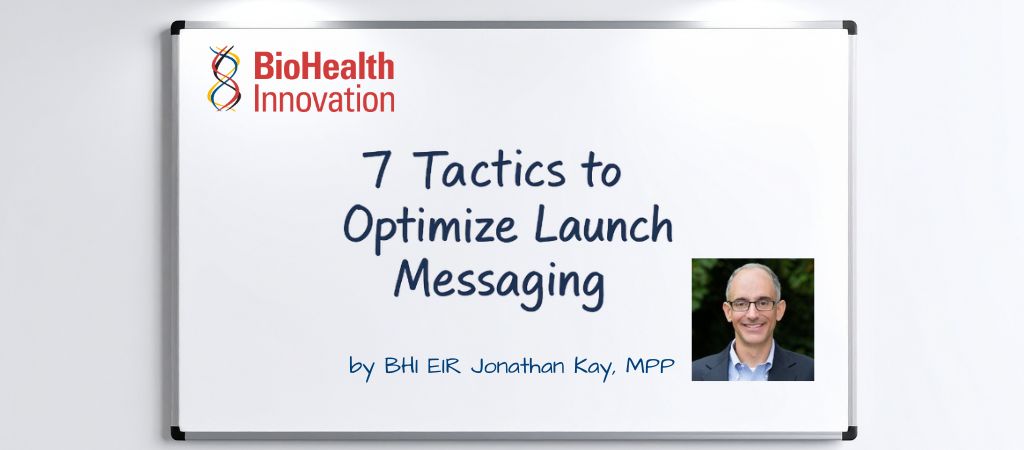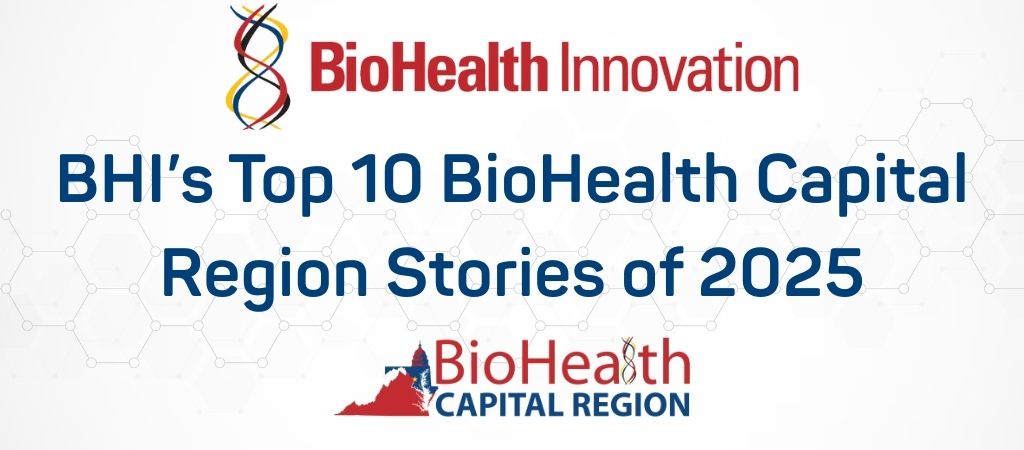
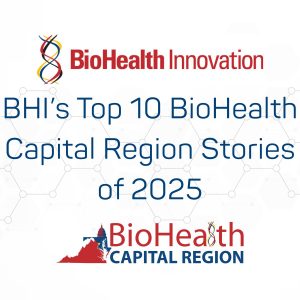 The BioHealth Capital Region closed out 2025 with clear evidence of strength and momentum. While life sciences companies across the country navigated capital constraints, policy uncertainty, and global market shifts, the BHCR region continued to grow. Major manufacturers expanded their U.S. footprints, new facilities came online, research institutions deepened their role in advanced technologies, and investment flowed across companies at every stage. Taken together, these stories show a region that did more than hold its ground. It advanced, adapted, and continued to lead.
The BioHealth Capital Region closed out 2025 with clear evidence of strength and momentum. While life sciences companies across the country navigated capital constraints, policy uncertainty, and global market shifts, the BHCR region continued to grow. Major manufacturers expanded their U.S. footprints, new facilities came online, research institutions deepened their role in advanced technologies, and investment flowed across companies at every stage. Taken together, these stories show a region that did more than hold its ground. It advanced, adapted, and continued to lead.
The BioHealth Capital Region Maintains a Top 3 National Ranking
For the third consecutive year, the BioHealth Capital Region earned a Top 3 position in GEN’s U.S. Biopharma Cluster Rankings. The region led the nation in biotechnology-related patents and ranked third in both NIH funding and lab space, maintaining strong performance despite economic pressure across the sector. Continued infrastructure investment and new facilities across Maryland and Virginia underscore long-term stability and competitiveness.
https://biohealthinnovation.org/the-biohealth-capital-region-maintains-top-3-spot-in-gens-2025-u-s-biopharma-cluster-rankings/
Lilly Commits $5 Billion to New Manufacturing in Virginia
Eli Lilly announced plans to build a $5 billion manufacturing facility in Goochland County, Virginia, marking its first fully integrated U.S. site dedicated to the manufacture of active pharmaceutical ingredients and drug products for bioconjugates and monoclonal antibodies. The project will create more than 650 permanent jobs and support advanced manufacturing using AI, automation, and digital systems.
https://biohealthinnovation.org/lilly-announces-plans-to-build-5-billion-manufacturing-facility-in-virginia/
AstraZeneca Expands Virginia Investment to $4.5 Billion
AstraZeneca increased its planned investment in a new Albemarle County manufacturing facility to $4.5 billion, expanding the site’s scope to include antibody drug conjugates alongside metabolic and oncology products. The project is expected to create approximately 3,600 direct and indirect jobs and will anchor a broader $50 billion U.S. manufacturing and R&D commitment.
https://biohealthinnovation.org/astrazeneca-plans-to-increase-investment-and-scope-of-its-virginia-manufacturing-facility-to-4-5-billion-creating-3600-new-jobs/
Nearly $3 Billion Invested in Montgomery County Companies
Montgomery County companies attracted $2.9 billion in investment during 2024 across mergers, acquisitions, venture capital, and private funding. Life sciences accounted for more than half a billion dollars, reinforcing the county’s role as a regional anchor for biohealth innovation. Over 100 deals reflected strength across companies of all sizes.
https://biohealthinnovation.org/mcedc-nearly-3-billion-invested-in-montgomery-county-maryland-companies-in-2024/
Merck Breaks Ground on $3 Billion Manufacturing Center in Virginia
Merck began construction on a $3 billion pharmaceutical manufacturing Center of Excellence in Elkton, Virginia. The project will expand small molecule manufacturing and testing capabilities while supporting more than 500 permanent roles and thousands of construction jobs. The investment builds on Merck’s long-standing presence in the region and its broader U.S. manufacturing strategy.
https://biohealthinnovation.org/merck-breaks-ground-on-3-billion-center-of-excellence-for-pharmaceutical-manufacturing-in-elkton-virginia/
AstraZeneca Opens $300 Million Rockville Manufacturing Hub
AstraZeneca unveiled its new $300 million Rockville Manufacturing Center, focused on cell and gene therapies for oncology clinical trials. Built using advanced digital tools, the facility reflects continued confidence in Montgomery County at a time of broader federal funding uncertainty. The site is expected to begin delivering therapies to patients in the near term.
https://biohealthinnovation.org/wbj-astrazeneca-unveils-300m-rockville-investment-a-boost-for-moco-amid-federal-cuts/
Samsung Biologics Establishes U.S. Manufacturing Footprint
Samsung Biologics announced the acquisition of the former Human Genome Sciences facility in Rockville, Maryland, securing its first U.S.-based manufacturing site. The transaction adds 60,000 liters of biologics capacity to Samsung’s global network, retains more than 500 skilled jobs, and strengthens domestic supply chain resilience.
https://biohealthinnovation.org/samsung-biologics-expands-u-s-manufacturing-capabilities-with-strategic-acquisition-of-human-genome-sciences-from-gsk/
USP Opens Advanced Technologies Laboratory in Maryland
The U.S. Pharmacopeia launched a new Advanced Technologies Laboratory in Rockville to support the adoption of advanced manufacturing, real-time quality monitoring, and alternative API production methods. The lab is designed to accelerate scalable solutions that strengthen medicine supply chains and support domestic manufacturing efforts.
https://biohealthinnovation.org/usp-announces-new-advanced-technologies-laboratory-in-maryland-to-accelerate-and-scale-pharmaceutical-manufacturing-innovations/
Northern Virginia Launches Its First Innovation District
With support from GO Virginia, Northern Virginia launched its first Innovation District focused on life sciences, aerospace, defense, and semiconductor industries. Led by George Mason University in partnership with Prince William County and the City of Manassas, the district aims to accelerate research translation, company formation, and workforce development.
https://biohealthinnovation.org/george-mason-is-part-of-northern-virginias-first-innovation-district-launched-with-transformational-grant-from-go-virginia/
Where Human and Artificial Intelligence Converge
The 2025 BioHealth Capital Region Forum brought together more than 750 attendees for two days of programming focused on AI, quantum technologies, advanced manufacturing, and investment. The week highlighted the region’s leadership across research, commercialization, and capital formation, while reinforcing its position as a Top 3 U.S. biopharma cluster.
https://biohealthinnovation.org/where-human-and-artificial-intelligence-converge-a-recap-of-the-2025-biohealth-capital-region-forum/
Looking ahead to 2026, the BioHealth Capital Region enters this year with depth across research, manufacturing, talent, and capital. Projects announced over 2025 are moving into execution, partnerships are strengthening, and the region’s role in national health security and innovation continues to expand. The trajectory is clear, and the foundation is strong. What comes next will build on a year that demonstrated both toughness and ambition.

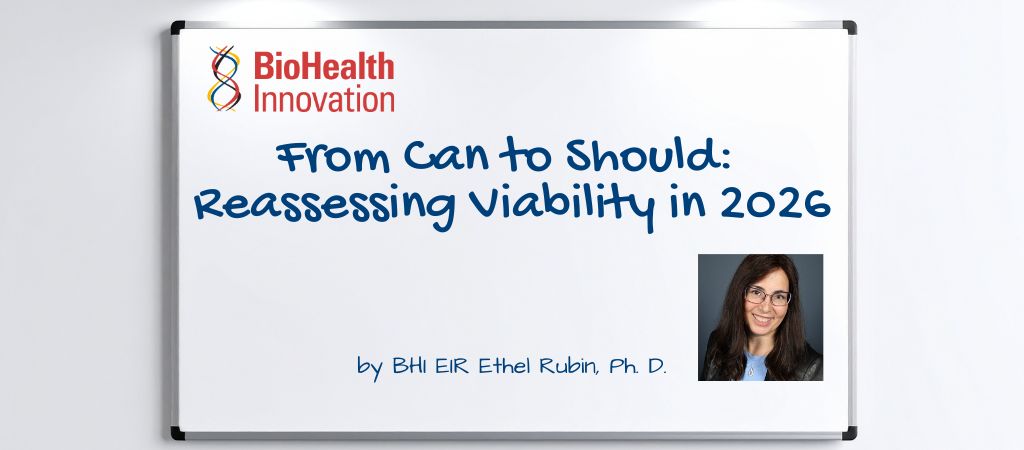
 Last year, I wrote a
Last year, I wrote a 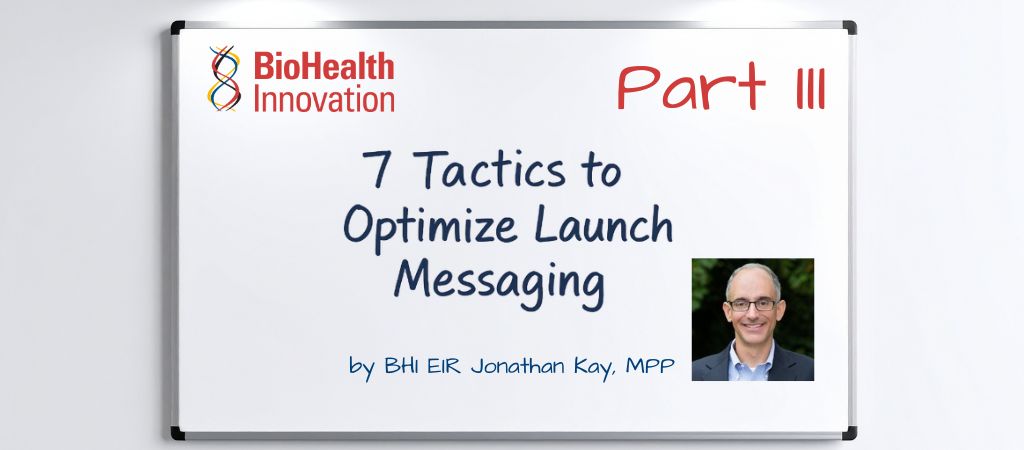
 by
by 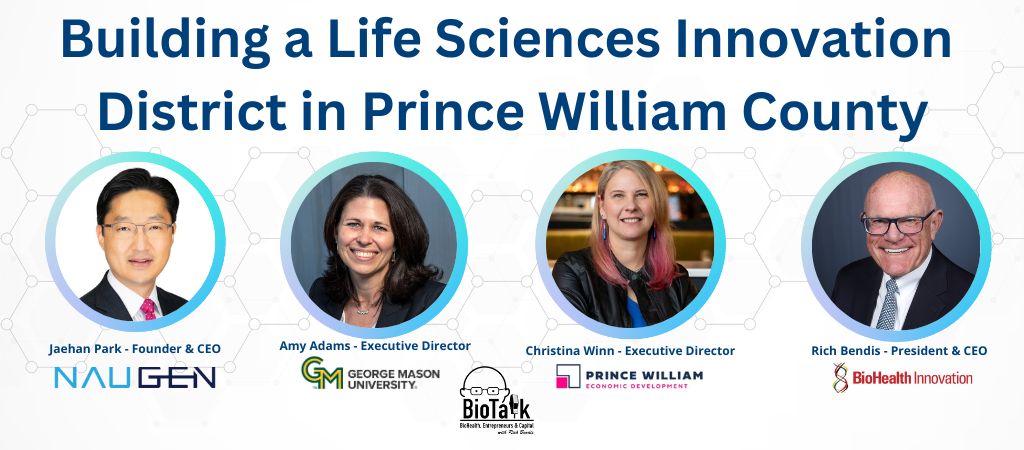
 This episode of the BioTalk with Rich Bendis Podcast brings together leaders from industry, academia, and economic development to unpack the vision behind a new life sciences Innovation District anchored in Prince William County. With introductions to NAUGEN, George Mason University’s Institute for Biohealth Innovation, and the Prince William County Department of Economic Development, setting the stage for how each organization contributes to the district’s foundation. The guests discuss the life science assets, research strengths, and translational capabilities that define the district and explain why it is well-positioned to support biotechnology and advanced R&D companies.
This episode of the BioTalk with Rich Bendis Podcast brings together leaders from industry, academia, and economic development to unpack the vision behind a new life sciences Innovation District anchored in Prince William County. With introductions to NAUGEN, George Mason University’s Institute for Biohealth Innovation, and the Prince William County Department of Economic Development, setting the stage for how each organization contributes to the district’s foundation. The guests discuss the life science assets, research strengths, and translational capabilities that define the district and explain why it is well-positioned to support biotechnology and advanced R&D companies.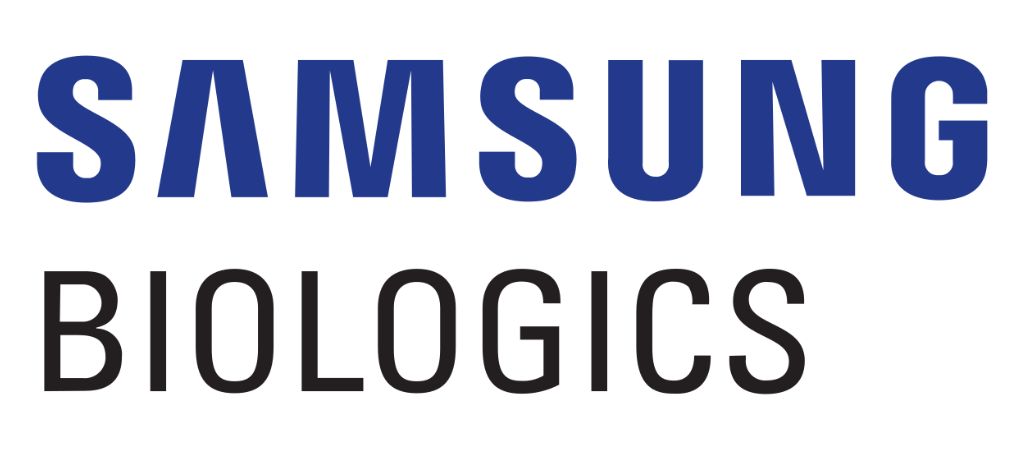
 INCHEON, South Korea, ROCKVILLE, Md. and LONDON
INCHEON, South Korea, ROCKVILLE, Md. and LONDON 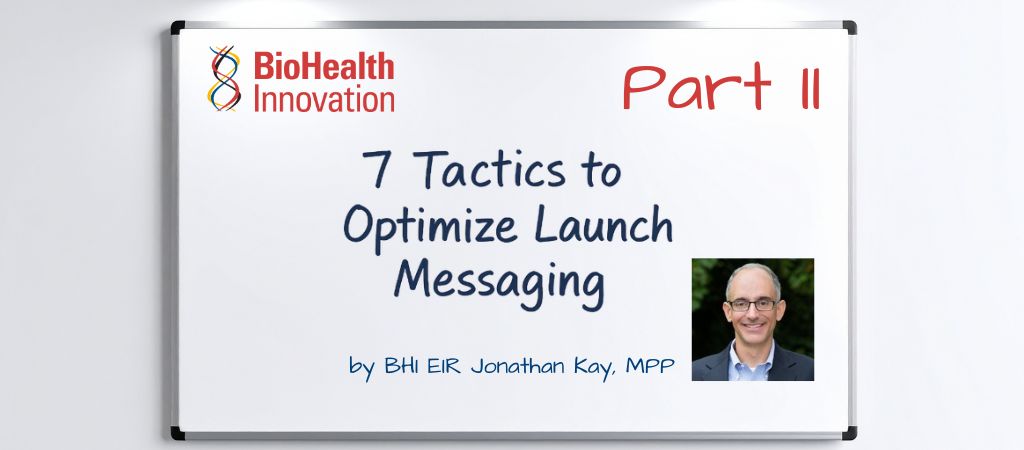



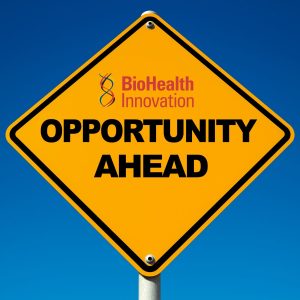 BioHealth Innovation is expanding its Entrepreneurs in Residence (EIR) network and is seeking experienced leaders at the intersection of biohealth and advanced technologies, including artificial intelligence and quantum computing.
BioHealth Innovation is expanding its Entrepreneurs in Residence (EIR) network and is seeking experienced leaders at the intersection of biohealth and advanced technologies, including artificial intelligence and quantum computing.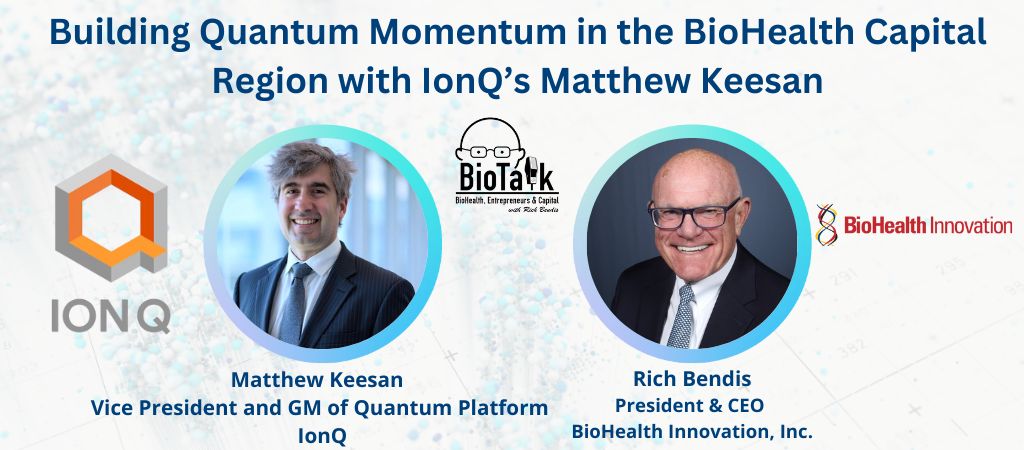
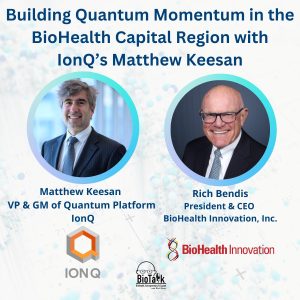 IonQ Vice President and GM of Quantum Platform Matthew Keesan joins BioTalk for a clear look at how they are advancing quantum computing from its home base in the BioHealth Capital Region. He shares the story of IonQ’s Maryland roots and explains quantum computing in straightforward terms for listeners seeking a high-level understanding. The conversation moves into why biohealth leaders should track the hardware race, what distinguishes IonQ’s approach, and how quantum is already being paired with AI to strengthen modeling and analysis. Keesan walks through early use cases showing traction today, challenges common myths about timelines, and shares which biohealth applications he expects to gain mainstream momentum by 2030.
IonQ Vice President and GM of Quantum Platform Matthew Keesan joins BioTalk for a clear look at how they are advancing quantum computing from its home base in the BioHealth Capital Region. He shares the story of IonQ’s Maryland roots and explains quantum computing in straightforward terms for listeners seeking a high-level understanding. The conversation moves into why biohealth leaders should track the hardware race, what distinguishes IonQ’s approach, and how quantum is already being paired with AI to strengthen modeling and analysis. Keesan walks through early use cases showing traction today, challenges common myths about timelines, and shares which biohealth applications he expects to gain mainstream momentum by 2030.